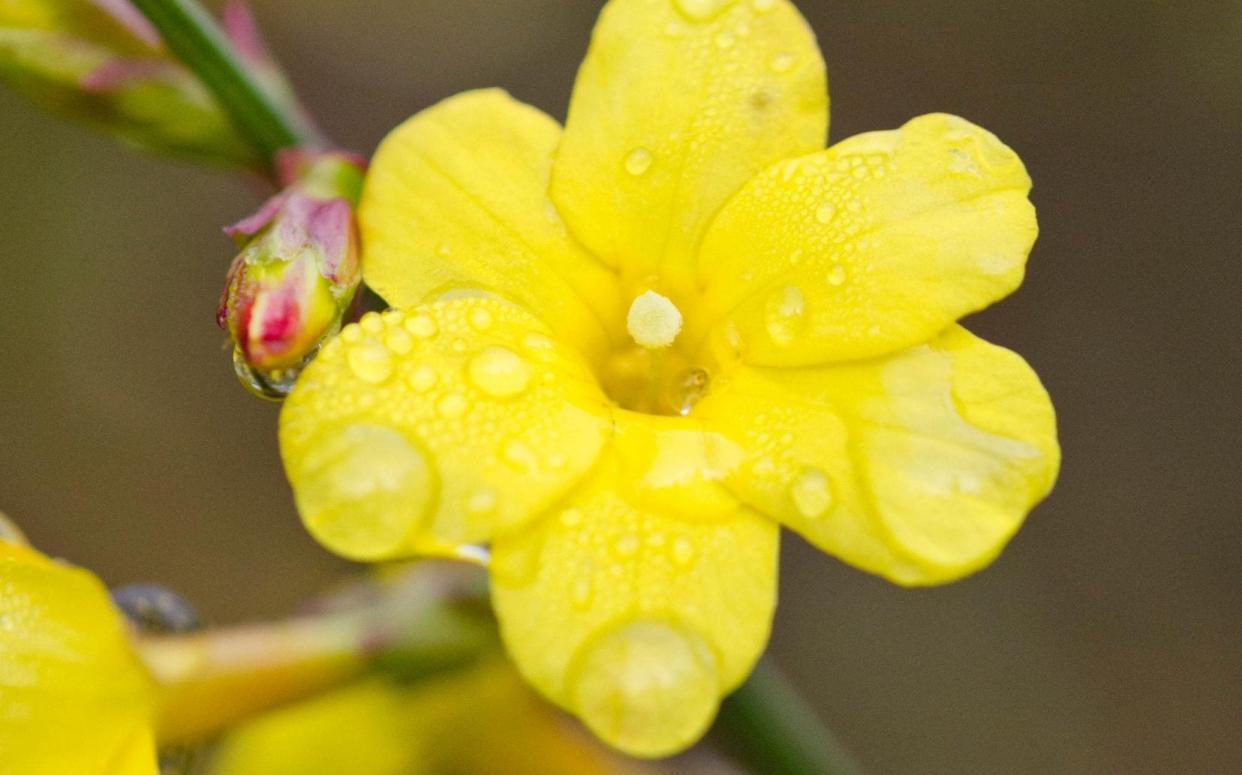Is winter jasmine scented? Why it pays to research even the plants you think you know

Winter jasmine – scented or not? Full marks if you said no. Of course, it isn’t. What made me ask the question was the arrival of one of those slightly breathless email from Thompson & Morgan, offering me a “scented shrub collection” for £9.99.
The three shrubs in the collection were Philadelphus ‘Belle Étoile’, lilac ‘Miss Kim’ and – you guessed – winter jasmine (Jasminum nudiflorum). Of course T&M know that winter jasmine isn’t scented, and I guess some apprentice web scribbler just got momentarily carried away.
But it did make me think that winter jasmine is a bit of a black sheep of the genus, because jasmines are usually scented. Which, in turn, made me wonder how easy it would be for a novice gardener to make the mistake of thinking that all jasmines are scented?
Quite easy, apparently. For example, look up winter jasmine on the Gardeners’ World website and you find, of jasmines in general: “Jasminum are evergreen or deciduous shrubs that often climb via climbing stems. Their fragrant flowers are star-shaped.” It then goes on to tell you all about winter jasmine, without mentioning scent again, one way or the other.
The RHS also introduce jasmines with: “Jasminum are evergreen or deciduous shrubs, many climbing by twining stems bearing usually pinnate leaves, and star-shaped white, pink or yellow flowers, which are sometimes very fragrant”. We then move on to the details of winter jasmine but, again, there’s no further mention of scent.
Although, to be fair, they only say jasmines are sometimes fragrant, and maybe they think we’re all familiar with a common plant like winter jasmine.
Nevertheless, I see a pattern here, and it’s not just about jasmine, or about scent. It’s about how far you need to go in telling gardeners about things that aren’t there. Of course most plants aren’t notably scented, but it would be tedious to have to put that in every description. On the other hand, I think in a genus where scent is a big selling point, you can’t just assume that everyone knows that this or that species or variety happens not to be scented.
For example, although the RHS may have slightly taken their eye off the ball with jasmines, they don’t make the same mistake with honeysuckles. They introduce them with: “Climbing honeysuckles have twining stems with green or variegated leaves.
They have clusters of trumpet-like blooms, with colours ranging from creamy-white, through yellow to red, that are often sweetly scented in summer”, but then go on to warn that “Not all climbing honeysuckles are fragrant (Lonicera × tellmanniana is an example of one that is not), so do check the label before you buy”.
But Gardeners’ World don’t seem to have noticed that there are non-scented honeysuckles: “Honeysuckles are usually hardy twinning (sic) climbers or shrubs with scented flowers. Choose from evergreen and deciduous forms.
Climbing honeysuckles produce scented flowers, followed by red berries that are very appealing to birds.” In fact, so keen are Gardeners’ World on scented honeysuckles that further down the same page we find: “Lonicera × tellmanniana – orange, yellow flowers from May to July. A deciduous climber with wonderful scent”. Yes, this is the same plant the RHS rightly warned you about: a lovely plant, but without scent.
The lesson, I think, if you’re contemplating buying a plant in a genus where most species have some particular feature, is to assume nothing, and do your research first.
Ken Thompson is a plant biologist with a keen interest in the science of gardening. His most recent book is a second collection of his Telegraph columns: Notes From a Sceptical Gardener. Order a copy from books.telegraph.co.uk.



